The role of electro pneumatics in automated systems
)
Pneumatic systems have always been a basic element for creating linear or rotational motion in the field of industrial automation.
Take, for example, the use of pneumatic cylinders with/without piston rods, slides, rotary actuators and clamps, which are usually inserted in kinematic chains in machines or systems in order to handle objects or press components. It is nearly always necessary to use electric sensors to obtain feedback on the position of actuators, which may be a simple limit switch signal (ON/OFF), or an analogue signal with a voltage or current that is proportional to the stroke completed.
Finally, the essential role played by valves shouldn't be forgotten, which operate as fully-fledged control systems capable of managing actuator exchanges, and the capture and processing of transducer signals.
Some of the main reasons for the spread of pneumatic systems in automation include control simplicity and ease of use.
For anyone with basic skills in the field of automation it is easy to prepare an electropneumatic system to implement movement, and just requires the availability of the right components, a few fittings and pipe, and a source of compressed air.
Similarly, the system can be reconfigured fairly quickly and simply, and does not require special electronics or programming expertise. Other significant benefits that have contributed to the popularity of pneumatics include the low cost of components, and the cleaning of equipment (especially with regard to hydraulic systems).
Pneumatic motion easily enables high speeds, considerable thrust, reliability and consistency over time.
It is therefore easy to imagine the reasons for electropneumatic systems becoming popular in the most varied industrial applications, and elsewhere.
In practice, pneumatic motion is to be found in nearly all machines or systems, possibly customised in line with specific requirements in different fields (e.g. the differences required of a pneumatic cylinder in a test laboratory compared with a foundry system).
The simplicity of pneumatic components also makes them especially sturdy and adaptable to a variety of operational requirements, ranging from general automation in 'normal' environments, to applications requiring special cleaning operations (e.g. life sciences or the food and drink industry), and heavy-duty applications, where the painstaking choice of materials and treatments makes all the difference. Not to be forgotten of course is the haulage sector with its particular specifications, or potentially explosive environments, where the restricted use of electrical components makes pneumatics especially suitable.
Another advantage of electro-pneumatic systems, which has helped to cement its success, is the extreme flexibility of the control systems that can be used.
In the simplest applications, a cylinder is moved by a valve controlled by a two-pole coil, and two sensors measure the position of the limit switch. It is convenient to use multipolar connection systems, usually with a capacity of up to 32, when the cylinders and the control valves increase in number. Requirements to upgrade control systems have increased in line with an increase in application complexity, leading to field buses capable of control via a single cable, and hundreds of analogue/digital IO devices (including valves and sensors). Field buses, which require installers to have additional technical expertise, make it possible to exceed the observable limits of multipolar connections, enabling a considerable amount of field data to be captured from various sensors (position, temperature, pressure, acceleration etc.).
This information is processed by a control unit (centralised or remote) and used to determine system motion in real time. With the advent of the Industry 4.0 revolution, this data is also used asynchronously to determine control strategies at a higher level, such as predictive maintenance or advanced diagnostics.
Over the years, Metal Work has developed many field bus interfaceable devices. By way of example, product families include the Series EB80, HDM and CM solenoid valve sets, the ISO 15552, SK or BK Elektro Series cylinders, the Regtronic Series proportional pressure regulator, and analogue position sensors, also available with the IO-Link interface.
We have also developed a series of advanced checks inside the EB80 solenoid valve system, to enable driven diagnostics in pneumatic circuits. In practice, EB80 can control several internal variables, related to the number of cycles implemented for example, or the presence of issues.
Thanks to calculation algorithms and field sensor readings, it can also control delays in cylinder movements, which could be due to an increase in friction or changes in operating conditions. These values can be read directly by the PLC or sent wirelessly to a central control system.
In the field of fuel control, Metal Work is developing a new series of digital flowmeters that enable the user to constantly read the flow rates and/or leaks in the various branches of the circuit.
The new flowmeters in the FLUX series, which are also available in 3 sizes (FLUX 0 for flow rates up to 200 Nl/min, FLUX 1 for flow rates up to 1000 Nl/min., FLUX 2 for flow rates up to 3000 Nl/min), generate a voltage or current signal proportional to the compressed air flow read in the relevant branch.
They can also either store the accumulated flow rate read or send digital signals when the importable (maximum or minimum) threshold values are exceeded. All values can be sent to the control system either via wire (analogue or IO-Link) or via Wireless and Bluetooth for the FLUX 1 and FLUX 2 sizes.
Why not visit us on stand D70 to discuss further support capability to ensure and harness your own position as industrial leaders.




